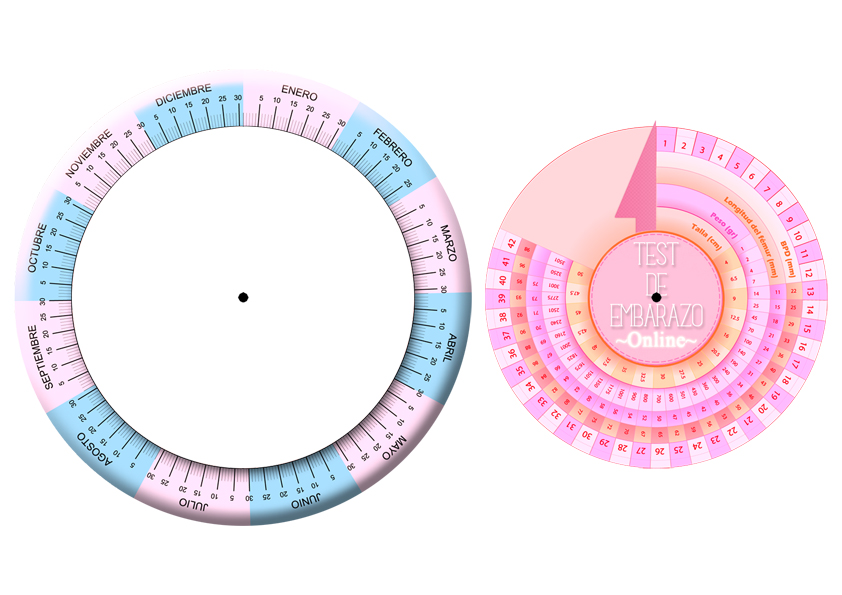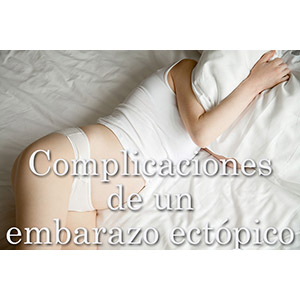Gestogram Online
After feeling the first symptoms of pregnancy, buying a pregnancy test and taking the pregnancy test which came back positive, the first thing I did (and I recommend you do), after celebrating with my partner, was to call my gynecologist to schedule an appointment.
One thing that caught my attention when I went to my first visit with the gynecologist, after finding out I was pregnant, was the cardboard calendar that turned while she asked me what day my last period was. Soon after I figured out what it was, it was a gestogram. Today I am going to explain what it is, how it is used, and I will show you everything you need to make your own gestogram, gestational disk or, also affectionately called, pregnancy roulette since it resembles a surprise roulette.

What is a gestogram or gestational disk?
A gestogram is a graphical representation, generally circular in shape, that will help us track our pregnancy week by week, the development of the baby, and helps us know its exact gestational age, like a manual week calculator that indicates the week of pregnancy we are in and the approximate date we will give birth (you can read more by reading this article How many weeks am I pregnant).
How is the gestogram used?
Using a gestogram is very simple. Generally, it consists of two concentric disks, disks that share the same axis. One of the disks is larger than the other and is placed beneath or behind the gestogram. The smaller disk is the one we move such that the mark or arrow drawn on it coincides with the date of the first day of our last period, called FUM (Last Menstrual Period). With only this movement, we can visually and very quickly obtain the following data:
- Approximate date of delivery - Week number of pregnancy - Approximate Biparietal Diameter (BPD) - Measure of the approximate femur length (FL) - Average weight - Average height
Why might you need your own gestogram?
As we have already mentioned, with the gestogram you will be able to quickly know the approximate date when you will give birth and the week of pregnancy you are in, but, as you will be thinking, you already know this data by heart. The data that might interest you out of curiosity, and also for your own control of your baby's growth, are the data related to the fetus such as the BPD which is the distance between the two parietal bones of the head, the FL, its weight, and its height. With this data, you can validate the information provided by your gynecologist or ultrasound technician, as they are directly related to your baby's development.
How do I make my own gestogram or pregnancy roulette?
The steps to create a gestogram are very simple. Below, I leave you a photo of the gestogram we have made for you.
- Download the gestogram by clicking on the image below.
- Print and cut out the two disks of the gestogram separately. Try not to cut the tip of the arrow, as it will help you point accurately to the correct date. Print it on cardstock or sturdy paper to make it more durable, you can also stick the printout on a cardboard before cutting it out.
- Make a hole in the middle ensuring that the binder can rotate properly. The binder we will use will be a pushpin type like the ones we used as kids for our craft portfolios.
- Join the two disks by passing the binder through the holes in the following order: first pass the small disk and then pass the large disk. Make sure it is tight enough so that it offers some resistance and does not turn unless we do.
Once you have it ready, you just need to align the tip of the arrow with the day and month of the day your last period came. The weeks of pregnancy are marked on the outer part of the small disk, alternating between dark pink and light pink on each number. If you look at the week marked as 40, coinciding with this, and on the large disk you will find the approximate date when your baby will be born. Without turning the gestogram, now look for today's date on the large disk, as we review the small disk at the same height and reading from outside in, we will find the following values: the week of pregnancy you are currently in, the distance between the baby’s head parietals, the femur length, the approximate weight, and lastly, the approximate height.
You now have your gestogram ready and know everything you need to start using it. Keep it with you at all times and you will be able to check at any moment the week of pregnancy you are in, the due date,…
Note: Fetal biometric growth charts are developed based on statistical data obtained by making multiple measurements on a large number of patients thus achieving average values estimated in a determined population. You have to keep in mind that they are always indicative, never absolute values. Don't forget that, any questions you have about your pregnancy, you should consult with your gynecologist, he is the only one who will guide you appropriately during its course and will inform you correctly about your baby's development.
The design of the gestogram is based on the website http://www.facemama.com/





